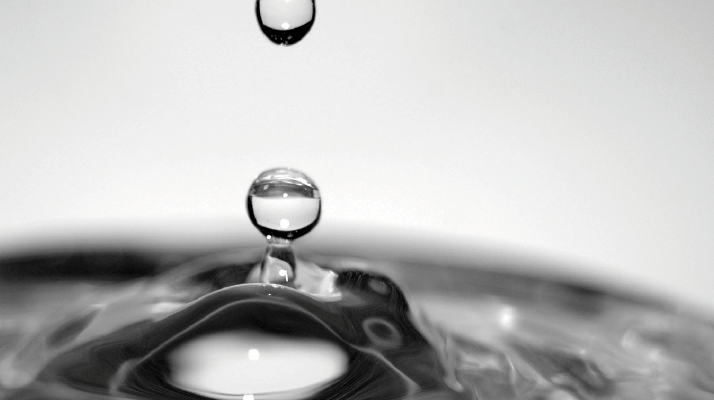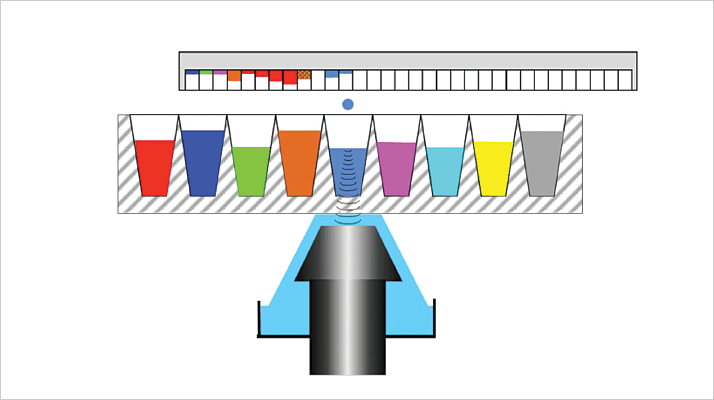Joe Olechno, Senior Research Fellow at Labcyte, has spent the last 30 years working on the development of innovative scientific tools and evangelizing those tools to a broad scientific field. He has published on numerous topics from gas chromatography and capillary electrophoresis to plant, insect and mammalian biochemistry, proteomics and glycomics. Most recently, he has focused on expanding the applications and use of acoustic liquid handling. He likes the idea of telling a liquid when to jump and how high. His PhD is from the University of California at Davis in Biochemistry.
"Doing all your science in or on a computer was not even a dream I had as a kid. Since the late 90's I have done all my science with models and through collaborations with others to get the data. One side effect of this is a complete lack of interest in computer games", says Sean Ekins. "I also did not imagine those computer models would be so susceptible to data quality issues and be put to use in helping to diagnose dispensing method differences." He has an underlying interest in repurposing pretty much everything, including the software and chemistry apps he uses.
Antony Williams is the VP of Strategic Development for the Royal Society of Chemistry and manager of the eScience team. At the RSC he is involved with a number of national and international projects for delivering chemistry related data to the community. He is one of the original founders of the ChemSpider project, one of the world’s top online chemistry databases. He has a PhD from the University of London and has worked in academia, for government research labs, in start-up companies and in Fortune 500 companies. He is widely published with over 150 publications and book chapters and is known as the ChemConnector in the social networks. He is a winner of the Jim Gray award for eScience from Microsoft.

Significant systemic errors in high-throughput screening of compounds (HTS) are generated by the use of pipettes and serial dilution processes. These errors, which include high rates of both false positive and false negative results, can mislead researchers on which compounds will make the best drug candidates and misdirect the development of subsequent compounds. The problem is widespread and deeply entrenched.
HTS is extensively used by all major pharmaceutical companies in their quest to discover new drugs. The estimated global market for HTS in 2017 is estimated to be $19.9 billion annually (1). The tremendous growth in screening of millions of compounds has been driven by a number of simultaneous advancements in science including parallel organic synthesis (which generates more compounds) and improvements in genomics and proteomics (which identify druggable targets that can be used in HTS). Pharmaceutical scientists constantly search for compounds that will bind to specific targets (receptors and enzymes), usually with the purpose of turning off the activity of the target. Inhibitors that bind tightly are excellent candidates for new drugs. Activity or potency is usually measured by analyzing an enzyme in the presence of varying concentrations of an inhibitor and determining at what level there is a 50 percent inhibition of activity (the IC50 value). The lower the IC50 value, the stronger the inhibitor and the better the drug candidate. The traditional mechanism to generate a range of concentrations is serial dilution: a fixed volume of a concentrated solution is diluted with a fixed volume of fluid. After mixing, a fixed volume of this newly generated solution is transferred to another vessel and diluted again. This step-wise process may be repeated multiple times to generate all the different required concentrations of the inhibitor to enable the generation of an IC50 experiment. The three-dimensional structures of the small molecule inhibitors and their associated IC50 values can be used to generate a model of the binding site of the target protein (a pharmacophore). The ability to generate a good pharmacophore is of immense help to the researcher. It suggests the presence or absence of features necessary in the small molecule for interactions with the protein, be they hydrogen bond donors, hydrogen bond acceptors, hydrophobic regions, etc., and their relative locations. An accurate pharmacophore allows researchers to predict the level of inhibition of potential new compounds from the structures of small molecules alone.
An alternative liquid handling process is acoustic liquid handling, as embodied by the Labcyte Echo liquid handler, produced by the company for which one of the authors (JO) works. As illustrated in Figure 1, it uses focused sound energy to eject upward a small but very precise droplet of fluid, thereby eliminating the use of any pipettes, nozzles or physical contact. Droplets are captured by an inverted container. Since surface tension is stronger than the force of gravity, the liquid does not drop back down. The ability to transfer liquids on a drop by drop basis (down to 2.5 nanoliters) can generate dilutions directly by varying the amount of concentrated inhibitor, rather than by using serial dilution techniques (2-4). Further, there is no potential for cross-contamination of the solutions due to dirty tips or from carry-over. Nor is there a possibility for the introduction of plasticizers and other components (leachates) from the plastic surfaces or tips into assays. It also reduces use of organic solvent in the final assay.

In a recently published paper (5), we looked more closely at the impact of the type of liquid handling on IC50 values and the pharmacophores generated from those values. Researchers at AstraZeneca disclosed data in a US patent and in an international patent application (6, 7) for potential cancer therapeutics. It showed radically different IC50 values depending on the dispensing technique and the use of direct versus serial dilution. Acoustic dispensing suggested that all the synthesized compounds listed were highly active inhibitors. The same compounds tested with traditional liquid handling and serial dilution generated poor IC50 values and, likely, would have been passed over for further study. We sought to understand the implications of the AstraZeneca results that showed as much as a 276-fold difference in IC50 values. We used the AstraZeneca data to create two separate pharmacophores, one based only on the pipetting data and the other on the acoustic data. As expected from the dramatically different IC50 values, the two pharmacophores were very different. But which was the better model? We tested the two pharmacophores for their predictive capabilities on a new set of compounds (8). The results were dramatic. The pipette-based pharmacophore was non-predictive: measured IC50 values were at odds with the predicted values and it did not correctly order the inhibitors from most to least potent. The acoustic-based pharmacophore did correctly order the new inhibitors in the rank obtained experimentally. Had the AstraZeneca researchers been limited to the pipette-based results they would likely have generated the next set of compounds based on a non-predictive model. This would have taken them in a different direction, wasted resources and failed in the discovery of a new family of drugs. We subsequently discovered X-ray crystallographic studies from AstraZeneca that strongly supported our initial results. Four papers (9-12) were published that provided X-ray crystallographic data for the receptor in question with inhibitors in the binding site. We also generated pharmacophores based on the X-ray structure information. Table 1 compares the binding features of the pipette-based pharmacophore, the acoustics-based pharmacophore and the average of the ten crystal-based pharmacophores. All the X-ray crystallographic pharmacophores indicated the presence of hydrophobic binding as did the acoustics-based pharmacophore. The pipette-based pharmacophore was noticeably missing such a region. Not only is the acoustics-based pharmacophore more predictive but it more closely resembles the true enzyme binding site feature requirements.
For this particular receptor and with these specific compounds, the acoustic technology coupled with direct dilution generated much better results. The acoustic-based pharmacophore was predictive and closely resembled the pharmacophores developed by X-ray crystallography. But the cautious researcher might still be hesitant. After all, serial dilutions have been used for decades. Is this a particularly strange circumstance? Results reported by pharmaceutical companies over the last decade suggest that this problem is widespread (13-15). Over 10,000 compounds have been tested with high rates of false positive and negative results for traditional liquid handling. There is a strong bias for pipette-based techniques to suggest compounds are less active than they are when transferred with acoustics using direct dilution. This suggests that hundreds of very useful compounds are being incorrectly ignored because they do not seem potent enough to carry forward. Even more worrisome is that the skewed data from pipette-based serial dilutions will contaminate the company databases and lead to structure-activity relationships that mislead researchers into the costly synthesis and testing of compounds that are bound to fail. We encourage the pharmaceutical industry, academia (where HTS is rapidly increasing) and others such as the NIH to continue to confirm or disprove our findings. We know that several companies have made comparisons of direct dilution via acoustic liquid handling with serial dilution via traditional liquid handlers and are seeing similar data as evidenced by posters and presentations at meetings, but more data would be helpful. We also strongly encourage the use of metadata in databases to include the type of dilution method and liquid handling used. Based on our data, it is clear that IC50 results can vary drastically between the two techniques. Aggregating the results together would seem to be a recipe for disaster, resulting in a loss of precision and accuracy as well as predictive power. Are your assays providing information that leads to the development of new drugs or does it take you down a cul-de-sac? While we do not wish to oversell the impact of the failure of serial dilutions, this case suggests that there may be other instances in which pharmaceutical and academic researchers followed dead-end compounds in a doomed attempt to discover new drugs. In light of well-publicized failures of HTS to fulfill possibly exaggerated utility, we wonder how much of the problem may lie with liquid handling procedures, which is ultimately a problem that can be readily rectified.
Joe Olechno is Senior Research Fellow at Labcyte Inc., Sunnyvale, California, USA; Sean Ekins is Senior Consultant, Collaborations in Chemistry, Fuquay Varina, North Carolina, USA, and Antony Williams is VP of Strategic Development for the Royal Society of Chemistry, Wake Forest, North Carolina, USA.
References
- “Global High Throughput Screening (HTS) Market to Reach $19.9 Billion by 2017 [...]” http://bit.ly/14l8Bz7 J. Olechno, J. Shieh, and R. Ellson, “Improving IC50 Results with Acoustic Droplet Ejection”, J. Assoc. Lab Autom., 11, 240 – 246 (2006). D. Harris et al.,“Gradient, contact-free volume transfers minimize compound loss in dose-response experiments”, J Biomol. Screen.. 15, 86-94 (2010). J. Comley “Serial vs. Direct Dilution,” Drug Discovery World, Spring, 36–50 (2007). S. Ekins, J. Olechno, and A.J. William, “Dispensing Processes Impact Apparent Biological Activity as Determined by Computational and Statistical Analyses”, PLoS ONE 8, e62325 (2013). B.C. Barlaam, R. Ducray, and J.G. Kettle, “Pyrimidine derivatives for inhibiting Eph receptors”, US 7,718,653 B2 (2010). B.C. Barlaam and R. Ducray, WO 2009/010794 A1 (2009). B.C. Barlaam and R. Ducray, WO 2008/132505 A1 (2008). C. Bardelle et al., “Inhibitors of the tyrosine kinase EphB4. Part 1”, Bioorg. Med. Chem. Lett., 18, 2776–2780 (2008). C. Bardelle et al., “Inhibitors of the tyrosine kinase EphB4. Part 2”, Bioorg. Med. Chem. Lett., 18, 5717–5721 (2008). C. Bardelle et al., “Inhibitors of the tyrosine kinase EphB4. Part 3”, Bioorg. Med. Chem. Lett., 20, 6242–6245 (2010). B. Barlaam et al., “Inhibitors of the tyrosine kinase EphB4. Part 4”, Bioorg. Med. Chem. Lett., 21, 2207–2211 (2011). T. Spicer et al., “Pharmacological evaluation of different compound dilution and transfer paradigms on an enzyme assay in low volume 384-well format” at Drug Discovery Technology, Boston (2005). J. Wingfield et al., “A model for improving efficiency through centralization, American Drug Discovery, 3, 24–30 (2008). J. Wingfield, “Impact of Acoustic Dispensing on Data Quality in HTS and Hit Confirmation”, at Drug Discovery 2012, Manchester, UK.
